Castles in Inverclyde
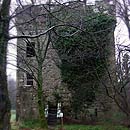
Ardgowan Castle (also known as Inverkip Castle)
The castle is located in the grounds of Ardgowan House near Inverkip. It is a three storey ruin that dates to the late 15th century. In 1306 , Inverkip was besieged by supporters of Robert Bruce, led by Robert Boyd of Cunningham. In 1403, King Robert III granted the lands of Ardgowan to his natural son, Sir John Stewart. The castle is dated to the late 15th century. In 1667 Archibald Stewart was created a baronet. The 3rd baronet married, in 1730, Helen Houston, heiress of the Shaws of Greenock. Their son Sir John Shaw-Stewart, 4th Baronet, commissioned a design for a new house from the architect Hugh Cairncross. Construction began in 1797, and was completed around 1801, after which the old castle was abandoned. The ruin was consolidated and repaired in 1936.
Your link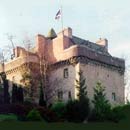
Castle Levan
This is a fortified tower house in Levan. A building had been on the site from the 14th century, but the present structure was substantially enlarged after 1547 and formed part of the Ardgowan Estates. In the 19th century a large mansion was built within a few metres of the ruined castle and was given the same name. The original castle was renovated in the 1980s and is now run as a bed & breakfast. It is still reputed to be haunted.
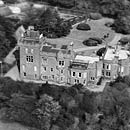
Castle Wemyss
Castle Wemyss, (not to be confused with the castle of the same name in Fife) was a large mansion in Wemyss Bay, Inverclyde. Built around 1850 for Charles Wilsone Brown, a property developer who had plans to develop the land around Wemyss Bay. Wilsone Brown sold the mansion to Sir John Burns (later Baron Inverclyde) in 1860. Burns commissioned the architect Robert William Billings to remodel the house in the Scottish baronial style, expanding the original structure by adding a new floor, new wings and a clock tower to the south-east corner. Castle Wemyss became a fashionable destination for many well-known visitors, including Lord Shaftesbury, Anthony Trollope, General Sherman, Henry Morton Stanley, Peter II of Yugoslavia, Emperor Haile Selassie and members of the British Royal Family. It is reputed that Trollope wrote part of Barchester Towers whilst at Wemyss Bay, and that ‘Portray Castle’ in The Eustace Diamonds was based on Castle Wemyss. Whether this is true or not, Trollope places Portray in a similar geographical location, with a description which is very like that of the castle and its grounds. Trollope did however include the real Castle Wemyss in his travelogue How the ‘Mastiffs’ Went to Iceland, a record of a trip from the Clyde to Iceland in June and July 1878. The house remained in the Burns family until the death of Alan, 4th Baron Inverclyde in 1957. None of his family were able to afford the cost of maintaining such a large property and it was sold to a developer. Inverkip Power Station was built on the northern part of the estate grounds. Greenfield legislation meant that whilst much of the larger estate was developed as Wemyss Bay grew in the 1960s and 1970s, the house itself was left untouched. Gradually falling into decay (and subsequently de-roofed to avoid payment of housing rates) it was not until 1984 that it was finally demolished. In the 1990s the grounds themselves were finally redeveloped, and all that now remains of the house is a broken flight of stone steps and a flagpole. An established monkey puzzle tree marking the entrance to the drive had to be removed for safety reasons. However, the locally formed Woodlands Trust have started to reclaim the Victorian fernery from the rhododendrons. Formal paths have now been established in the woods which are immediately adjacent to the site of the former castle.
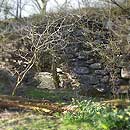
Duchal Castle
Only fragments of this castle remain in it’s position on high rocky crag where it was naturally defended. It stands between the Green Water and the Blacketty Water . The estate belonged to the Lyle family in the 13th century. It is possible the castle was built in the 12th Century and therefore be the first Lyle castle was Duchal motte. The castle was garrisoned by the Earl of Lennox in 1488, and was beseiged by the King in 1489. The property passed to the Porterfields in 1544.
Dunrod Castle
No trace of this castle remains. Once it overlooked over looking Kip Water. Dunrod Castle, formerly a property of the Lindsays, stood a little S of the lands of Flatterton. Its stones were used for wall-building, so that all that remained in 1856 was a slightly raised, grassy mound covering the foundations. The parish of Inverkip’s chief claim to fame (or notoriety) was in relation to witches in the mid 17th century. A local verse recalls “In Auld Kirk the witches ride thick And in Dunrod they dwell; But the greatest loon amang them a’ Is Auld Dunrod himsel’.” ‘Auld Dunrod’ was the last of the Lindsay family of Dunrod Castle. As the result of a dissolute life he lost all his possessions and fell into the black arts. Local reputation had it that he was in league with the devil, and he died in mysterious circumstances in a barn belonging to one of his former tenant farmers. Nothing now remains of the castle which stood at the foot of Dunrod Hill.
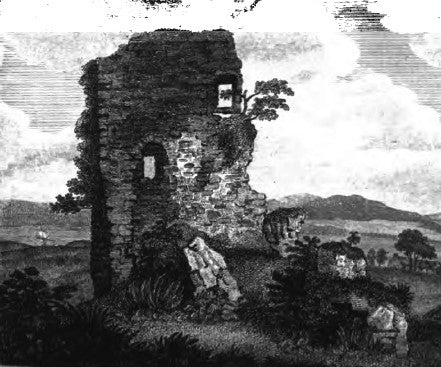
Easter Greenock Castle
Not much is known about the design of Easter Greenock Castle, we know it was near the burgh of Greenock and was built sometime in the mid-sixteenth century. The lands belonged to the Crawfords of Kilbirnie in Ayrshire who acquired them during the reign of Mary, Queen of Scots. Cartsburn extends from the Carts Burn on the west along the River Clyde to the point where the boundary falls out at Old Clyde Forge. The lands of Cartsburn were originally part of the barony of Kilbirnie and became the patrimony of a younger brother of that family, whose posterity ended in the person of David Crawford of Cartsburn in the reign of Charles I. By the mid- seventeenth century the lands of Cartsburn and Cartsdyke belonged to John Crawford of Kilbirnie who in 1641, because of his distinguished services to the Crown during the early years of the Wars of the Three Kingdoms(1638 to 1651), was made a baronet by Charles I. He died in 1662 and left two daughters by his second wife Magdalen, daughter of Lord Carnegie, named Anne and Margaret. Anne married Sir Archibald Stewart of Blackhall the first baronet, while Margaret became the wife of Patrick Lindsay, second son of the Earl of Crawford. The lands were entailed on Margaret and her male heirs, who had to assume the name of Crawfurd with the family arms.
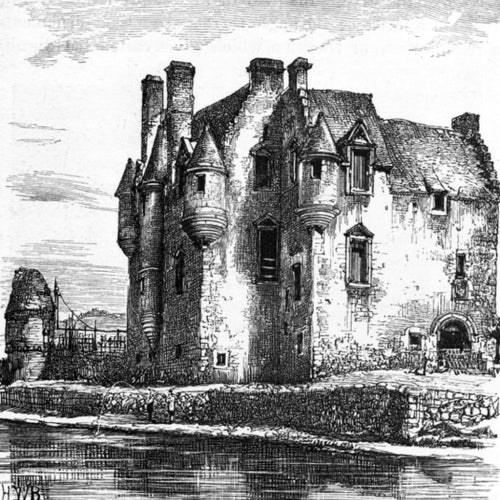
Newart Castle
This is a well-preserved castle sited on the south shore of the estuary of the River Clyde in Port Glasgow. Built in 1478 by George Maxwell when he inherited the Barony of Finlanstone (Finlaystone). The original castle had a tower house within a walled enclosure, or barmkin, entered through a large gatehouse. All that remains of the outer defensive wall is from one of the original corner towers. In the late 16th century the castle was inherited by Sir Patrick Maxwell, a powerful friend of James VI who was notorious for murdering two members of a rival family and beating his wife who left him after having 16 children. In 1597 Sir Patrick expanded the building, constructing a new north range replacing the earlier hall in the form of a three storey Renaissance mansion. The central part of the mansion has cellars under a main hall, and other accommodation above that. In 1668 the Glasgow authorities purchased land around Newark Castle from Sir George Maxwell who was then the laird, and developed the harbour into what they called “Port Glasgow”. The last Maxwell died in 1694 and the castle had a series of non-resident owners. An early tenant was a ropemaker called John Orr who also dealt in wild animals such as big cats and bears which he obtained from ships visiting the Clyde and often housed in the castle cellars.
